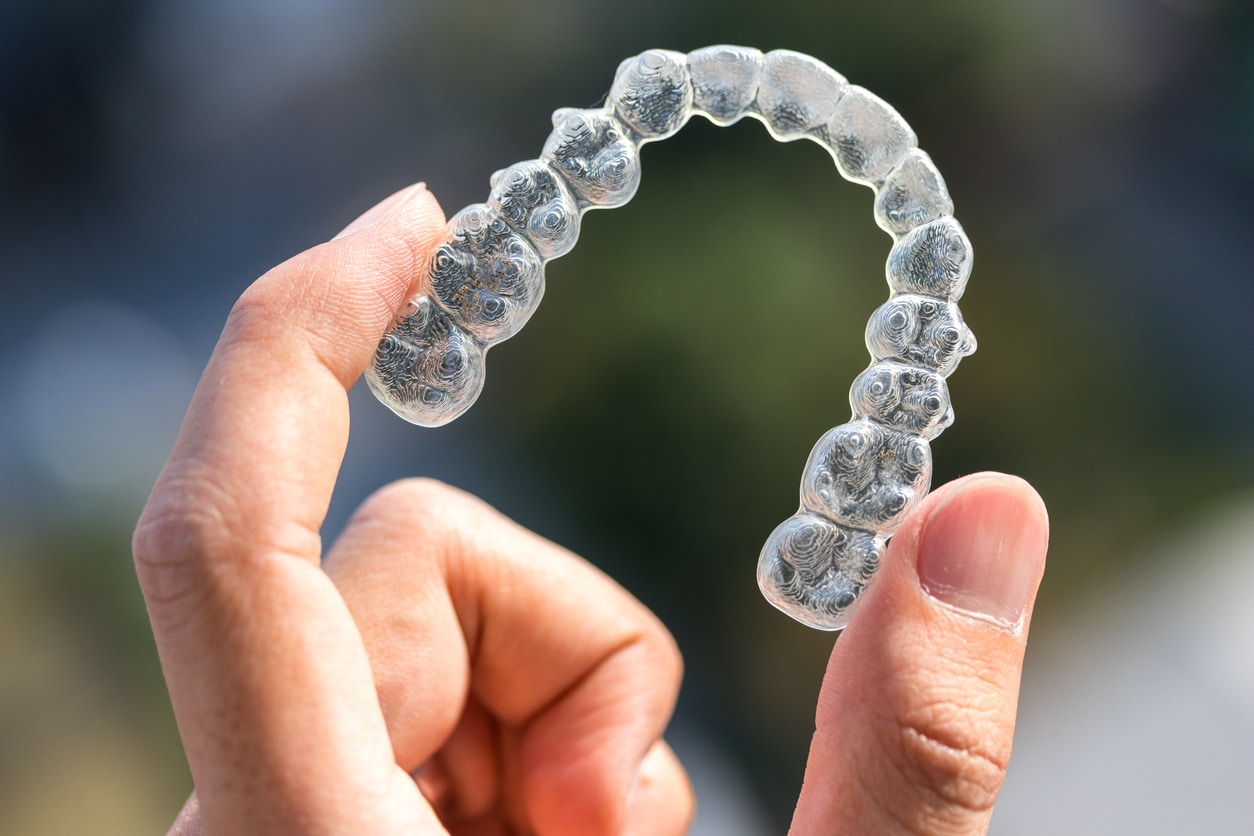
Invisalign is referred to as the clear alternative to braces. As opposed to metal or clear brackets, Invisalign uses clear plastic aligners that fit over the teeth and gently shift them into proper alignment. Since Invisalign was created and due to its success, other clear teeth alignment products have come about. If you’re thinking of trying one of these other teeth alignment systems, here’s what you should consider.
Key Characteristics
Each of the clear alignment systems on the market have key characteristics that set them apart from the others and should factor into your decision about which type would be best for you.
- In-office monitoring or at home only.
- Cost.
- Orthodontist vs. dentist.
- Length of treatment.
- Diagnostic methods.
These are the major differences between the different types and how they are administered. It’s up to you to decide what considerations are most important to you when it comes to choosing a treatment system.
In-Office Monitoring of Progress, Self-Treatment, or Video Consulting
Some clear alignment systems allow you to completely treat yourself at home. You do your own impressions and order the system online. Then you follow the treatment plan and wear your aligners as recommended. Some of these self-treating systems have office locations you can visit if you need assistance and others don’t. Some systems offer video conferencing with an orthodontist or dentist for assistance or to monitor your progress as you go.
Of course the risk with any self-treatment system is that there could be unrecognized error built in, from the diagnostics at the start of treatment through wearing the aligners until the end of the treatment. An orthodontist is trained to recognize any problems that may pop up and adjust the treatment accordingly. If you don’t end up with the results you were hoping for with self-treatment, there may not be any recourse other than to start all over with a different system.
With Invisalign the diagnostic records and digital scans are evaluated by a dentist or orthodontist and they design your aligner treatment. Progress is monitored at regular intervals along the way to ensure the most effective results. This ensures that not only does your smile look great, but it functions correctly as well.
Cost Considerations
Some of the alternative brands out there are comparable to Invisalign and others are priced lower. If cost is your only consideration, you may find that choosing the least expensive option may not give you the best results. You may end up having to pay for retreatment with an orthodontist negating any initial savings. It is worth talking to an orthodontist to understand your options. Sometimes an alternative treatment may be available which is even less expensive than the self-treatment option. Don’t forget, an orthodontist will have payment plans available to make your treatment affordable.
Monitoring by an Orthodontist or Dentist
What’s the difference between having your treatment system monitored by a dentist or an orthodontist? Both a dentist and orthodontist are experts in occlusion and oral health. They are able to recognize when something is going wrong with the alignment. An orthodontist has two to three years of extra education in how teeth move. An orthodontist can recognize difficult movements and make the appropriate aligner adjustments, even designing a new set of aligners part way through treatment if the teeth aren’t moving the right way. An orthodontist can even offer hybrid treatment for particularly difficult movements which may not be able to be treated by aligners alone. This hybrid treatment could involve placing a clear button or bracket on a few teeth for a short period of time while still using the aligners.
An orthodontist has the expertise to determine if the patient’s orthodontic issues would be best corrected via clear aligners in the first place. Some patients may ideally be treated with traditional braces. An orthodontist can explain the limitations of aligner treatment for your specific case so that you can make an informed choice of treatment methods. Choosing a system with periodic in-office orthodontic monitoring has distinct advantages.
Length of Treatment Differs Between Systems
Some alternative clear alignment systems list longer average treatment time frames than Invisalign and others shorter. In actuality, the length of treatment cannot be accurately determined until diagnostics are done, and even then it is just an estimate. Be wary of any system that claims to straighten teeth in a significantly shorter length of time than Invisalign. For example, 3-6 months is probably not a realistic estimate.
Diagnostic Methods
Another major difference between clear alignment systems is the method that the original diagnostics are collected. Some systems are done completely online, while others require a visit to an orthodontist or dentist. Doing your own digital impressions or images of your teeth may be convenient, but the margin for error is high. Professional assistance with this crucial part of the treatment plan is recommended.
Andover Orthodontics Recommends Invisalign
Among all the clear alignment systems, Andover Orthodontics recommends Invisalign for the following reasons:
- Diagnostics are accurately done in-office. A digital scan is used to create the aligners
- Treatment plan is designed and approved by an orthodontist before the aligners are created
- Small, clear attachments can be placed on certain teeth to improve how well the aligners will work
- Progress is monitored with regular in-office visits
- Length of treatment is average and realistic
- Cost is comparable to other treatment systems
We believe in this system because we’ve seen it work for many satisfied patients.
Call 978-475-0450 today to schedule a free consultation or request an appointment. We look forward to helping you achieve a more beautiful smile.
